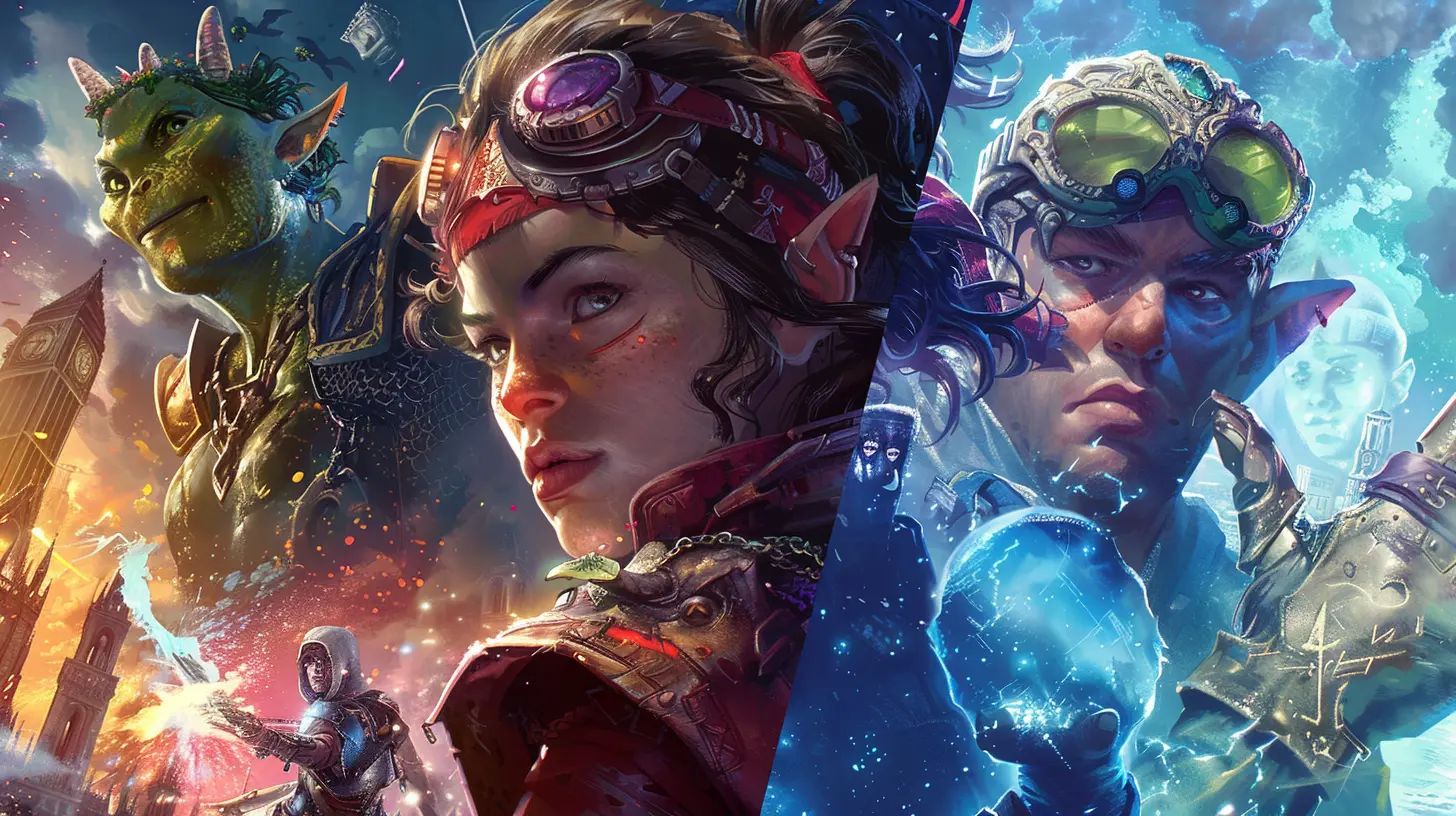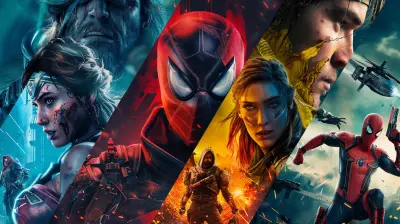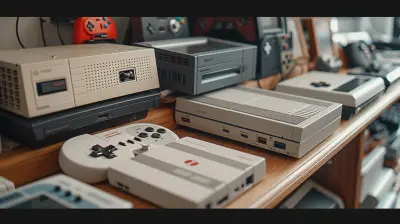Regulating In-Game Purchases: What’s Happening Globally?
23 June 2025
Video games today aren’t just about epic quests, cool graphics, and fast reflexes—they’ve also become money machines. And I'm not just talking about buying the game itself. There’s a whole other economy living inside of your favorite titles, one built around in-game purchases. Think loot boxes, character skins, battle passes, virtual currency, and pay-to-win upgrades. Sound familiar?
Yeah, you’ve probably bought a few yourself, or at least thought about it. But here’s the catch—governments across the globe have started raising their eyebrows at this booming part of the gaming industry. Why? Well, let’s just say not everyone’s happy with how these purchases are marketed and consumed, especially when kids are involved.
So, what’s the deal? What are countries doing about it? And what could this mean for the future of your favorite games? Let’s break it all down.
What Are In-Game Purchases, Anyway?
Before we dive into what the world’s governments are doing, let’s get on the same page.In-game purchases (also known as microtransactions) are small payments players make for additional content or perks in a game they already own or downloaded for free. These can be purely cosmetic—like a shiny sword or a dance move in Fortnite—or functional, giving players a competitive edge. Sometimes, they come wrapped in mystery, like loot boxes, where you don’t know exactly what you’re paying for until after you’ve paid. Fun? Maybe. Risky? Definitely.
Why Are In-Game Purchases Causing Controversy?
Alright, so we’ve all spent a few bucks here and there on cool gear or exclusive content. What’s the big deal?Let’s put it like this. In-game purchases often rely on psychological tricks to get players to spend more money—especially younger players. It’s similar to the way slot machines work in casinos. Flashy colors. Exciting sounds. The promise of something amazing... just one click away. It gets addictive.
And that’s exactly why consumer protection groups, parents, and governments are concerned. The main issues include:
- Gambling-like mechanics (especially with loot boxes)
- Lack of transparency about what you're actually buying
- No age restrictions
- Encouraging overspending, sometimes unknowingly
The Global Response: What Countries Are Doing
Now let’s take a world tour and see who’s stepping up to the plate when it comes to regulating in-game purchases. Spoiler alert: it’s a mixed bag.🇧🇪 Belgium: Loot Boxes? Nope.
Let’s start with Belgium, the country that’s pretty much leading the charge. In 2018, the Belgian Gaming Commission declared that certain loot boxes were a form of gambling. Games like FIFA, Overwatch, and Counter-Strike were directly in the spotlight.Publishers were given two choices: remove the loot boxes or face legal action. EA eventually complied after some resistance, and loot boxes disappeared from their Belgian versions. The law here sets a clear standard—no gambling-like features without a gambling license.
🇳🇱 Netherlands: Tightening the Grip
Neighbouring the Belgians, the Dutch regulators have taken a similar path. The Netherlands ruled that if loot boxes contain items with real-world market value, they qualify as gambling. This means developers could fall under gambling laws if they use such systems.In recent years, Dutch courts have been seesawing on the matter, but the intent is clear—they want more consumer protection and less exploitation.
🇬🇧 United Kingdom: Still Debating
The UK hasn’t gone full throttle like Belgium, but the government has definitely raised concerns. A high-profile review in 2020 pushed for loot boxes to be regulated under gambling laws. However, the UK decided not to formally classify them as gambling—yet.Instead, they’re urging the industry to self-regulate more effectively. Not exactly a crackdown, but the heat is rising. Many are calling for stronger measures, especially from parent groups and politicians.
🇩🇪 Germany: Transparency, Please
Germany is all about clarity. Starting from 2021, new rules were brought in to protect minors. Games must clearly display whether they include any type of in-game purchase. Also, age ratings now consider the presence of monetization features.It’s not an outright ban, but it’s a nudge toward making in-game mechanics more obvious and less sneaky.
🇫🇷 France: Holding Developers Accountable
France hasn’t passed any laws banning loot boxes, but the conversation is heating up. The Senate has called for investigations, and there’s been a push toward ensuring that in-game purchases are ethical and transparent.France is leaning more toward industry oversight and corporate responsibility—at least for now.
🇨🇦 Canada: Watching Closely
Canada hasn’t made any big legislative moves, but consumer organizations are pushing for action. Class-action lawsuits have popped up, targeting companies like EA for their loot box mechanics. There’s growing pressure for provinces to treat certain in-game elements as gambling under existing laws.🇺🇸 United States: State-by-State Scrutiny
The U.S. government hasn’t passed any federal laws yet, but several states have introduced bills targeting loot boxes and microtransactions.Senator Josh Hawley proposed a bill in 2019 to ban pay-to-win mechanics and loot boxes in games geared toward minors. While it didn’t pass, it opened up the national conversation in a big way.
At a state level, places like Hawaii and California are actively reviewing bills, and consumer advocates are increasingly vocal.
🇦🇺 Australia: Shedding Light on the Dark Corners
Australia’s Senate launched inquiries into the impact of loot boxes on players, especially children. Early findings compared the psychological effects to traditional gambling, and there’s significant support for regulation.Developers might face mandatory disclosure rules soon, and parental controls could become stricter.
🇳🇿 New Zealand: Aligning with Its Neighbors
New Zealand has observed Australia’s findings closely and agrees with the potential risks. While no formal bans exist right now, the government hasn’t ruled out future regulation. Kiwi watchdogs are urging for player protection, especially for younger gamers.🇰🇷 South Korea: Disclosure Is a Must
South Korea might just be one of the most disciplined markets when it comes to in-game purchases. Since 2015, developers are required to disclose the odds of loot box rewards. That means you can actually see the chances of getting that ultra-rare armor before you buy.It’s not a ban, but it’s a transparency win—and players appreciate it.
🇨🇳 China: Leading in Transparency
Unsurprisingly, China has some of the strictest rules when it comes to gaming. Loot box odds must be disclosed, and there are daily spending limits for underage players.China also imposes strict time limits on how long minors can play online games. Their model emphasizes hardcore government oversight—and while it might seem intense, it’s all about limiting addiction and impulse spending.
Industry Reaction: Playing Defense (and Sometimes Offense)
So, how is the gaming industry handling all this global scrutiny?Some developers are pushing back hard, arguing that loot boxes and similar mechanics aren’t gambling. Others are embracing change—offering more transparent in-game stores, age-restricted purchases, or even removing loot boxes entirely in certain markets.
Big players like Microsoft, Nintendo, and Sony have agreed to disclose loot box odds across all platforms. That’s a step in the right direction.
But not every studio is on board. Some smaller, mobile-focused companies still depend heavily on microtransactions to stay afloat, and they're less eager to innovate with more ethical monetization strategies.
What Does This Mean for Gamers?
Here’s where it gets real. Whether you’re a casual mobile gamer or a hardcore battle royale warrior, these regulations can and will affect your experience in the digital world. You might see:- Fewer loot boxes and more direct purchase options
- More upfront info about what you're buying
- Enhanced parental controls and spending limits
- Region-specific versions of games
- Better customer protection policies
In short, things are shifting toward more transparency, fairness, and control for players—especially kids. That’s a good thing, right?
The Road Ahead: What’s Next?
Regulating in-game purchases isn’t just a trend—it’s a movement. As games keep evolving and becoming more immersive, the line between entertainment and exploitation gets blurrier.We’re likely to see more countries join the crackdown, more companies pivoting to ethical monetization, and a bigger push for global standards. Who knows? In a few years, randomized loot box mechanics might be a relic of the past—like floppy disks or cable TV.
One thing’s for sure: the gaming world is changing, and players everywhere are watching closely.
Final Thoughts
In-game purchases aren’t inherently evil. They help developers keep games alive, support free-to-play titles, and sometimes add a lot of fun and style. But unchecked, they can turn gaming into a slippery slope of spending, especially for those who are too young—or too hooked—to make informed decisions.Regulating in-game purchases is all about balance. It’s about creating a gaming world that’s fun, fair, and safe for everyone—without ruining the joy that digital adventures bring. And as the global debate heats up, it’s up to players, parents, developers, and lawmakers to shape the future of gaming monetization.
So next time you’re tempted by that limited-time loot box, ask yourself... do I really need that sparkly dragon sword?
all images in this post were generated using AI tools
Category:
In Game PurchasesAuthor:

Lana Johnson
Discussion
rate this article
2 comments
Zephyra Lee
Fascinating topic! Excited to see how regulations evolve!
November 15, 2025 at 3:56 PM

Lana Johnson
Thank you! I'm excited to see how these changes unfold too!
Vivian Adams
Important steps for fair gaming!
June 30, 2025 at 2:24 AM

Lana Johnson
Thank you! Ensuring fairness in gaming is crucial as we navigate the complexities of in-game purchases worldwide.


